processing CYCLE
The processing cycle to which the material to be anodized is subjected takes place through certain sequences that we will list below.
The material is moved and unloaded with electric side forklifts, subsequently stowed in cantilever. Then the first check is carried out on the material in terms of: overall weight, number and integrity of the packages. During processing, it is taken up by the cantilevers and moved to special trolleys by means of forklifts that transport them to the brushing area.
Here, operators manually discard the material and carry out a detailed check on it by setting aside any damaged profiles or that have defects in the management system, the information is entered.
The material is then processed according to the finishes: standard brushing (automatically brushed with SPAL brushing machine with 6 heads below and 6 heads above).
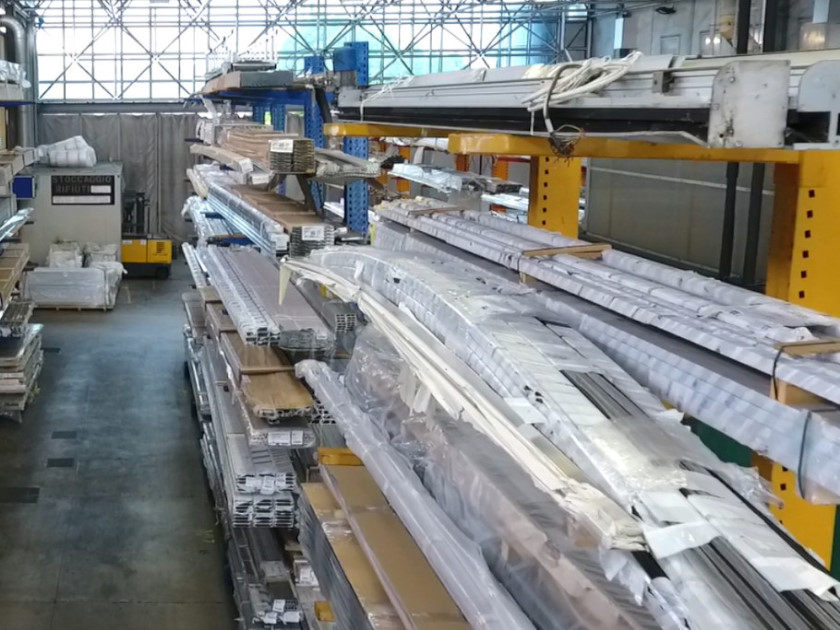
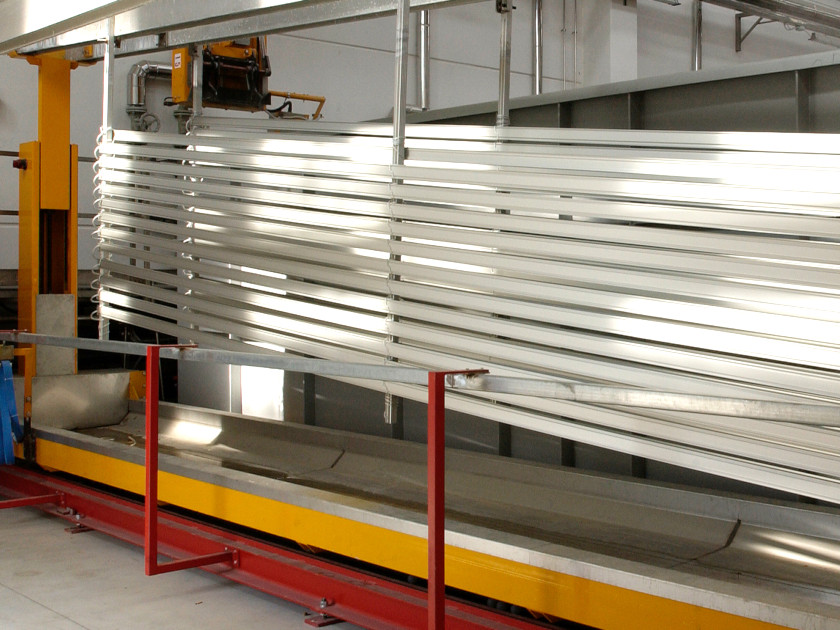
The steel and water brushes thus allow to obtain a clean surface), scotch brite brushing (automatic dry brushing scotch brite bristles), sandblasting (automatic sandblasting machine with 8 turbines using stainless steel microspheres, and 360 ° processing), SD, SI, NV, VB brushing, chemical finishing (chemical pre-treatment carried out before anodizing), LP cotton polishing, SISAL polishing.
Subsequently, the pre-treated material is fixed to supports to be ready for anodizing. Following the identification of the bathroom requested by the customer, (color) the oxidation phase begins.
Following the identification of the bath, the color and the ddt (packing list), which are attributed to the customer, the oxidation phase begins:
- degreasing
- anodic oxidation
At this stage a third, important, check of the thickness of the oxide layer is carried out.
SILVER Oxidation (NATURAL): the material, after several washes, passes directly into the cold fixing tank with a temperature of 30 ° and then passes into the hot aging tank, or directly into hot fixing.
ANODIC ALUMINIUM COLOURING
After the anodic oxidation in sequence with regard to the BRONZE colors, the passages in the tanks follow one another in succession of:
- rinsing
- rinsing
- bicarbonate
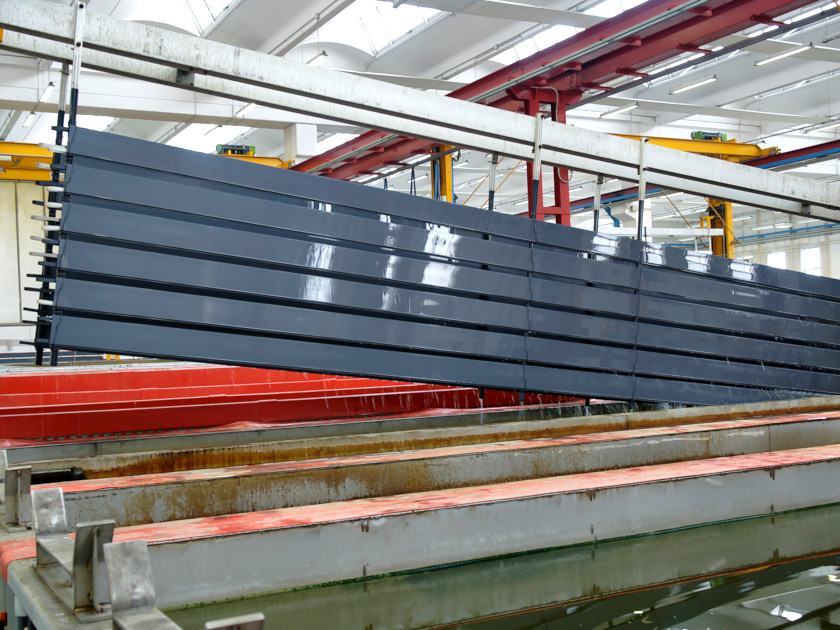
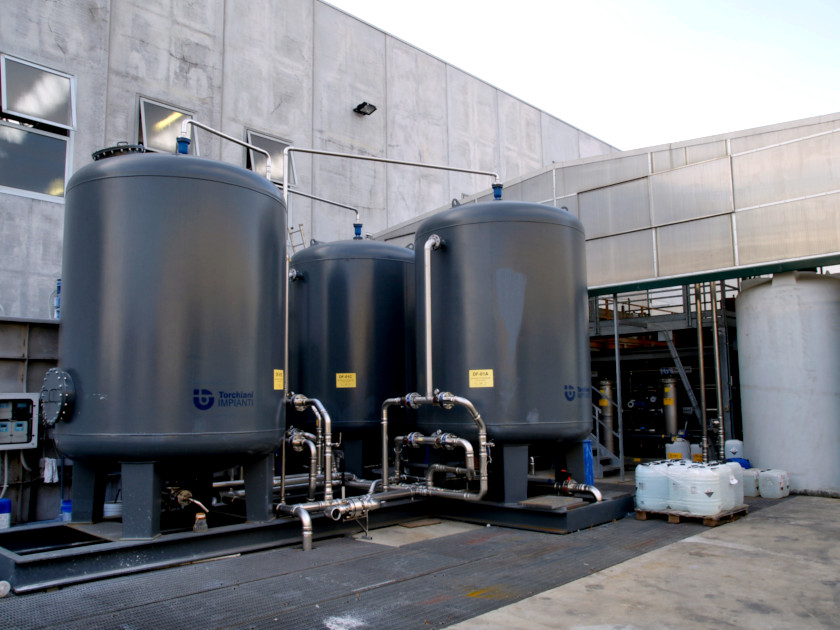
- rinsing
- cobalt acetate
- rinsing
- permanganate
- rinsing
The more steps you make, the more color intensifies by acquiring darker shades. After reaching the desired or pre-established color with the passage in the tank of the cold fixing and in hot aging, the operating cycle ends.
For ELECTRO colors, after degreasing and anodic oxidation, the material is immersed in the electrolyte tank, which allows electrocoloring (as a required sample) starting from light bronze up to black working on light – dark; and then finish with the passage in the cold fixing tank and in hot aging; or directly in the hot fixing tank.
For the colors ELECTRO FOR INTERFERENCE after degreasing and anodic oxidation the material is immersed in the electrolyte tank, which allows the electrocoloration by interference that in the first phase makes a modification of the pore and subsequently deposits the tin to reach the various colors such as: green, purple gray, brown, blue etc.
The substantial difference between electrocoloration and interference electrocoloration is based not only on light dark variation but also on color variation. The phase ends with the passage in the cold fixing tank and in hot aging; or directly in the hot fixing tank.
For the Organic Black coloring, a passage is made in a solution of organic dye with different times depending on the geometry of the material to be treated. The fixing phase follows.
The coloring and microns, which are made in the anodic oxidation phase, are controlled by special electronic equipment, as well as the entire production cycle is controlled by a timer system.
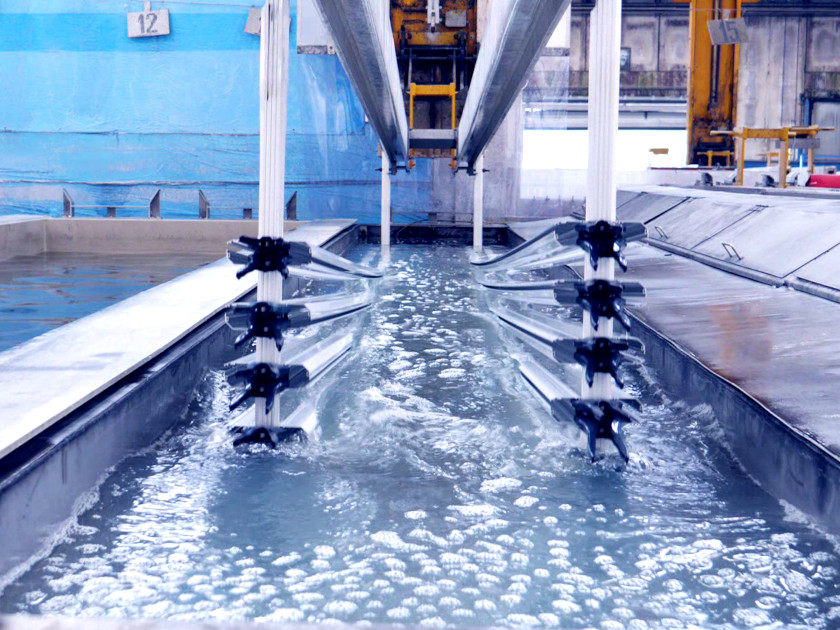
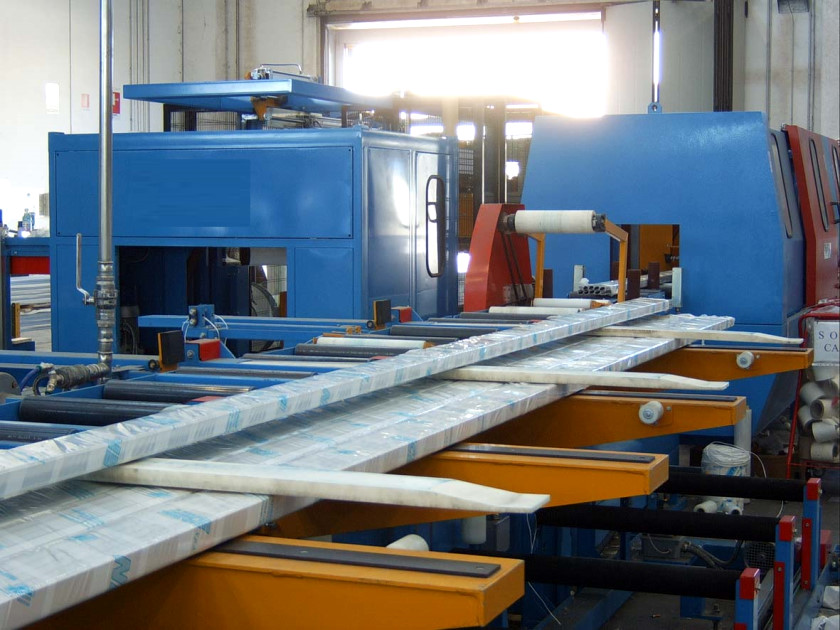
The packaging, which ends the working cycle, is carried out automatically with the application of micro-perforated propylene and stowed on cantilever.
Depending on the customer’s request, the packaging is also available in micro-perforated nylon with the NECE spa inscription or neutral, or, with nylon leaf placed or interposed; polyethylene or iron strapping with or without beams. The anodized material is then weighed individually and verified through procedures that guarantee the quantity at the output.
Optionally, the application of PVC film on both profiles and sheets and the possible Anti-scratch treatment can be requested.